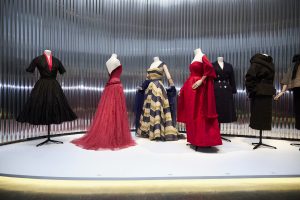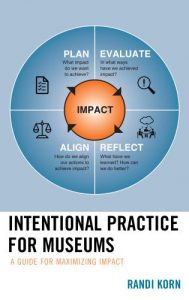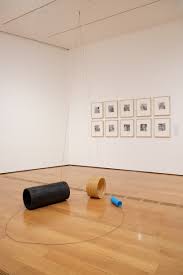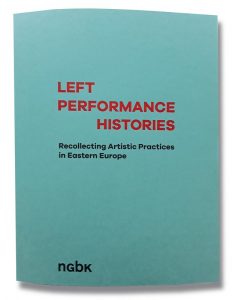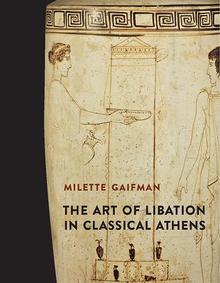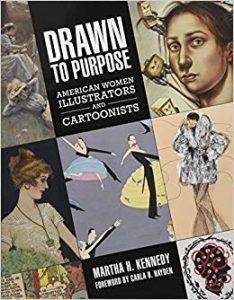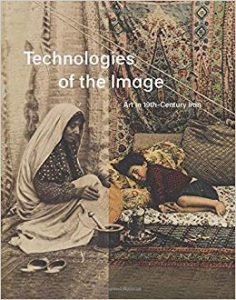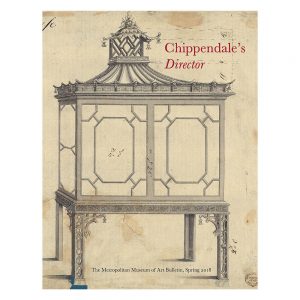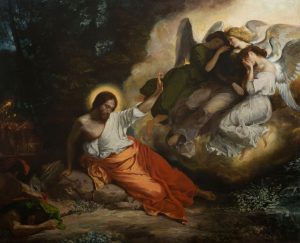CAA News Today
CAA Announces David Raizman as Interim Executive Director
posted May 20, 2019

Photo by Michael Froio
On Sunday, May 5, the Board of Directors of CAA voted to appoint David Raizman as the Interim Executive Director of the organization. David has served as Treasurer of CAA since October 2018 and has held a number of administrative and faculty roles in higher education over a long career.
David’s term will begin July 1, 2019, at the close of the term of Hunter O’Hanian, the current Executive Director.
“I’ve been a member of CAA since 1992 and have attended and participated in CAA Annual Conferences since the early 1980s. CAA’s many programs and publications have contributed much to my development as a scholar and teacher. As a board member I’ve enjoyed seeing how CAA serves its broader membership to meet needs and challenges in academe and the arts,” said David Raizman.
“As interim Executive Director I look forward to learning more about the organization and the staff and facilitating the good work they do. I also look forward to continuing the work of Hunter O’Hanian, who created an environment of diversity and inclusion and shifted the direction of CAA toward these important ideas.”
David’s term as Interim Executive Director will span from July 1, 2019 through the appointment of a new Executive Director. The Executive Director search is currently underway, with the board of directors interviewing placement firms. The goal is to have a new executive director to lead CAA by the end of 2019.
“The Board of Directors is pleased that an experienced administrator and accomplished academic with David Raizman’s qualifications will lead CAA through this transition,” said Jim Hopfensperger, President of the CAA Board of Directors. “We have full confidence David is the right person to advance CAA’s strengths as a learned society and a professional association, while positioning the organization for long-term success under the next Executive Director.”
David Raizman biography
David Raizman is Distinguished University Professor Emeritus of Art & Art History in the Westphal College of Media Arts & Design at Drexel University in Philadelphia, Pennsylvania. He is the author of History of Modern Design (London, Laurence King and New Jersey, Pearson, 2nd edition 2010) as well as several articles and reviews on design history, including subjects ranging from American furniture to the history of world’s fairs. He earned his PhD at the University of Pittsburgh under John Williams and earlier in his career published articles and reviews on the medieval art of Spain. Prior to being appointed CAA Treasurer he was Treasurer of the International Center of Medieval Art (ICMA) and a member of its Finance Committee. During his academic career Dr. Raizman served in several administrative roles, as department head, associate dean, and interim dean in the Westphal College of Media Arts & Design, and his College’s representative to the National Association of Schools of Art & Design (NASAD).
During the summer 2015 he directed a four-week NEH-funded summer institute entitled “Teaching the History of Modern Design: The Canon and Beyond” at Drexel University. He was a guest lecturer at Tsinghua University in Beijing in 2014, and a fellow and guest lecturer at the Wolfsonian/FIU Museum in Miami Beach, Florida (2009; 2010). He is the co-editor of two books, with (current CAA board member) Carma Gorman, of Objects, Audiences, and Literature: Alternative Narratives in the History of Design
(Cambridge Scholars Publishing, 2007), and most recently, with Ethan Robey, of Expanding Nationalisms at World’s Fairs: Identity, Diversity and Exchange, 1851-1915 (Routledge, 2017). His latest book, Reading Graphic Design: Image, Text, Context is scheduled for publication with Bloomsbury in 2019.
New in caa.reviews
posted May 17, 2019
Katie Knowles reviews the exhibition Dior: From Paris to the World. Read the full review at caa.reviews.
Deborah Ziska writes about Intentional Practice for Museums: A Guide for Maximizing Impact by Randi Korn. Read the full review at caa.reviews.
Katie Geha discusses Al Taylor: What Are You Looking At? by Michael Rooks. Read the full review at caa.reviews.
Amy Bryzgel explores Left Performance Histories: Recollecting Artistic Practices in Eastern Europe, edited by Judit Bodor, Adam Czirak, Astrid Hackel, Beata Hock, Andrej Mircev, and Angelika Richter. Read the full review at caa.reviews.
News from the Art and Academic Worlds
posted May 15, 2019
Want articles like these in your inbox? Sign up: collegeart.org/newsletter
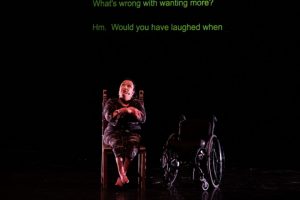
Artist NEVE performs at “I wanna be with you everywhere (IWBWYE),” a three-day festival “of, by, and for” disabled artists and writers, via Hyperallergic.
A Georgetown Student Defends the Reparations Referendum
“I have no interest in seeing Georgetown co-opt this referendum as its own contribution.” Last month, Georgetown University undergraduates voted overwhelmingly to tax themselves to create a reparations fund. (The Atlantic)
University of Texas Graduate Students Hold “Grade-In” at UT Tower
Student workers at UT Austin rallied this week to demand better pay and tuition coverage. (KXAN Austin)
Parenting and Labor in the Art World: A Call to Arms
Last month, MoMA PS1 agreed to settle curator and editor Nikki Columbus’s claim of gender, pregnancy, and caregiver discrimination. But what is the larger context of this landmark case? (Hyperallergic)
A Performance Festival by and for Disabled Artists
A look at how arts organizers can move beyond compliance with the Americans with Disabilities Act and instead embrace “access intimacy.” (Hyperallergic)
This Dealer Fought for African-American Artists for Decades—Now the Market Is Paying Attention
“When I called realtors to try and find a space on 57th Street, most of the realtors hung up. They said, ‘Well, what kind of gallery are you going to have?’ And I said, ‘I have a gallery that shows the work of black artists’—clink.” – Linda Goode Bryant (Artsy)
Three Changes Higher Ed Leaders Should Be Ready to Make
Higher education leaders met with journalists last week at the Education Writers Association’s National Seminar. Here are their top three takeaways. (Education Dive)
Announcing New CAA Board Appointments
posted May 14, 2019
We’re delighted to announce new officer appointments for the following individuals on CAA’s Board of Directors.
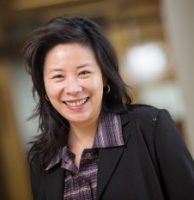
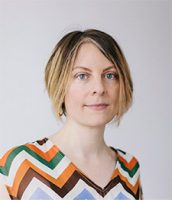
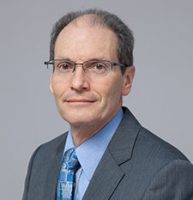
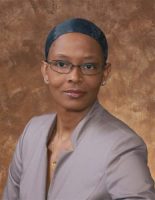
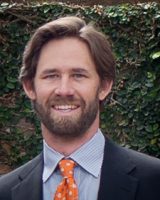
Left to right: Alice Ming Wai Jim, Melissa Potter, Peter Lukehart, Audrey G. Bennett, and Colin Blakely.
Alice Ming Wai Jim, Vice President for External Relations
Professor, Concordia University Research Chair, Montreal
Melissa Potter, Vice President for Annual Conference & Programs
Associate Professor, MFA, Columbia College Chicago
Peter Lukehart, Vice President for Publications
Associate Dean, Center for Advanced Study in Visual Arts, National Gallery of Art
Audrey G. Bennett, Vice President for Diversity and Inclusion
Professor, University of Michigan
Colin Blakely, Secretary
Director and Professor, School of Art, University of Arizona
About the Board of Directors
The Board of Directors is charged with CAA’s long-term financial stability and strategic direction; it is also the Association’s governing body. The board sets policy regarding all aspects of CAA’s activities, including publishing, the Annual Conference, awards and fellowships, advocacy, and committee procedures.
Lynne Allen, Niku Kashef, Ugochukwu-Smooth C. Nzewi, and Jennifer Rissler were elected to the board earlier this year.
New in caa.reviews
posted May 10, 2019
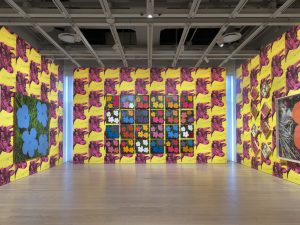
 Thomas Crow reviews Andy Warhol: From A to B and Back Again by Donna De Salvo. Read the full review at caa.reviews.
Thomas Crow reviews Andy Warhol: From A to B and Back Again by Donna De Salvo. Read the full review at caa.reviews.
Mary Thomas writes about La Raza by Colin Gunckel. Read the full review at caa.reviews.
News from the Art and Academic Worlds
posted May 08, 2019
Want articles like these in your inbox? Sign up: collegeart.org/newsletter
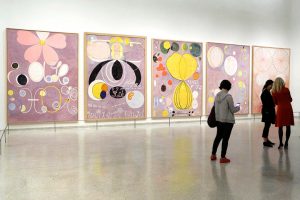
Works by Swedish painter Hilma af Klint (1862-1944) in the Guggenheim Museum’s Paintings for the Future exhibition. Photo: Johannes Schmitt-Tegge/picture-alliance/dpa/AP
What Can the Museum World Learn From Hilma af Klint?
“I think this shows us that we have narrowed the field of ‘blockbuster’ artists to a very small number of men. But there are other great artists that capture the imagination of the public.” – Helen Molesworth (Slate)
Experts Warn Macron Against Rushing to Rebuild Notre-Dame
More than 1,150 artists, curators, academics, and leading conservators have publicly called on the French president not to rush into reconstruction. (France 24)
US Museum Asks Far-Right German Party to Stop Using Its Painting for an Election Ad
The Clark Art Institute condemned the use of a Jean-Léon Gérôme painting in its collection, but the work is in the public domain. (Hyperallergic)
One of World’s Wealthiest Educational Institutions May Close Its Renowned Press
“The fragile truce surrounding Stanford University Press remains cause for concern, but the scale and rapidity of the mobilization that rose up to defend the press is reason for guarded optimism.” (The Nation)
Leonard A. Lauder Research Center for Modern Art Launches Digital Archives
The Digital Archives Initiative (DAI) was made possible through partnerships with institutions and artists’ estates worldwide. (Artforum)
Making Monographs Open
A project that aims to slash the cost of producing monographs could help make more of them available to the public for free. But will scholars participate? (Inside Higher Ed)
New in caa.reviews
posted May 03, 2019
Constanze Graml reviews The Art of Libation in Classical Athens by Milette Gaifman. Read the full review at caa.reviews.
Katie MJ Larson writes about Drawn to Purpose: American Women Illustrators and Cartoonists by Martha H. Kennedy. Read the full review at caa.reviews.
Nancy Demerdash-Fatemi explores Technologies of the Image: Art in 19th-Century Iran, edited by David J. Roxburgh and Mary McWilliams. Read the full review at caa.reviews.
Debra Schmidt Bach discusses Chippendale’s “Director”: The Designs and Legacy of a Furniture Maker at the Metropolitan Museum of Art, and Chippendale’s “Director”: A Manifesto of Furniture Design by Morrison H. Heckscher. Read the full review at caa.reviews.
Jonathan P. Ribner reviews Delacroix by Sébastien Allard, Côme Fabre, Dominique de Font-Réaulx, Michèle Hannoosh, Mehdi Korchane, and Asher Miller. Read the full review at caa.reviews.
Apply to be a CAA Campus Ambassador
posted May 02, 2019
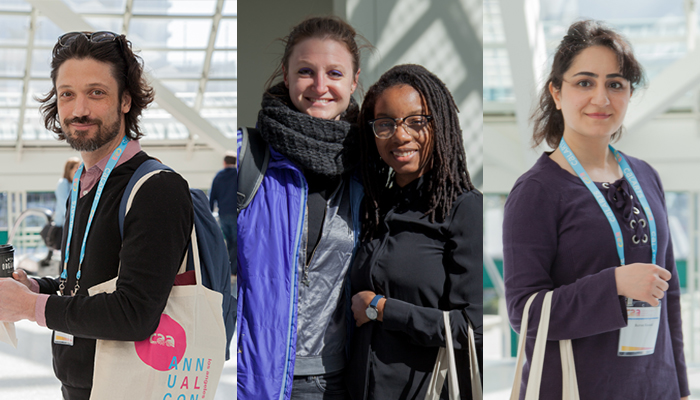
CAA 2018 Annual Conference attendees. Photo: Rafael Cardenas
CAA is seeking Ambassadors in the New York, Boston, and Chicago areas to represent CAA and give short talks about the organization to their fellow classmates and students in nearby schools.
The selected Ambassadors will be compensated for each talk and given a complimentary CAA Annual Conference registration and one-year CAA membership at the student level. Ambassadors will collect feedback at their talks and have check-ins with CAA staff leading the project.
To be considered for the CAA Ambassador role, applicants must be currently enrolled in a visual arts-focused program at a university or college in the New York, Boston, or Chicago area. Applicants should be in their junior year or higher. Master’s degree, Master of Fine Arts, and PhD candidates are encouraged to apply. Familiarity with CAA and its programs is necessary for this role. Candidates should feel enthusiastic about spreading the word about CAA and feel comfortable speaking in front of groups. The Ambassador role is a two-semester commitment (fall and spring) with a maximum of five talks given on campuses each semester.
To be considered for the CAA Ambassador Program, please submit your resume or CV, cover letter expressing your interest, and one reference to Alison Chang at achang@collegeart.org.
Applications will be accepted until the positions are filled.
Action Needed: Restoring Tax Equity for Artists
posted May 02, 2019
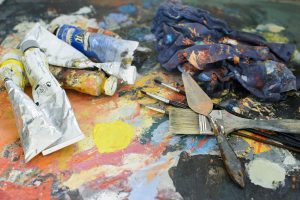 We urge our members to help support the Artist-Museum Partnership Act of 2019 (HR 1793), an important initiative to restore tax equity for artists. If passed the act would allow artists to deduct the fair market value of their work when donating to an institution or charity, rather than only the cost of supplies. While collectors donating artwork can currently deduct fair market value, artists are not permitted to.
We urge our members to help support the Artist-Museum Partnership Act of 2019 (HR 1793), an important initiative to restore tax equity for artists. If passed the act would allow artists to deduct the fair market value of their work when donating to an institution or charity, rather than only the cost of supplies. While collectors donating artwork can currently deduct fair market value, artists are not permitted to.
First introduced in 2005, the measure has passed the Senate more than once in the past, but it still hasn’t become law.
Rep. John Lewis is now circulating a “Dear Colleague” letter in support of the act, which we urge all representatives to sign on to.
Click here to find your representatives.
For more on CAA’s advocacy efforts, click here.
CWA Picks for May 2019
posted May 02, 2019
CAA’s Committee on Women in the Arts selects the best in feminist art and scholarship to share with CAA members on a monthly basis. See the picks for May below.
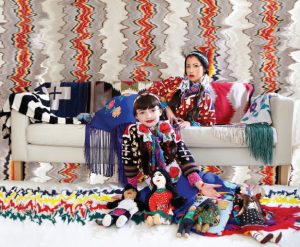
Wendy Red Star, Apsáalooke Feminist #3—Apsáalooke Feminist Series, 2016, on view at the Newark Museum through June 16th. Image: © Wendy Red Star
Legal Gender: The Irreverent Art of Anita Steckel
April 13 – May 12, 2019
Verge Center for the Arts, Sacramento
When artist Anita Steckel’s (American, 1930-2012) solo exhibition, The Sexual Politics of Feminist Art (1972, Rockland Community College) was threatened closure by a County Legislator due to the erotic imagery in her work, she founded the Fight Censorship Group. The women’s collective, including member artists Louise Bourgeois, Hannah Wilke, and Joan Semmel among others, denounced the double standard in the artistic community between sexualized men and women, and played a major role in reshaping thought around erotic subject matter within the context of sexual and creative freedom. This exhibit, curated by Kelly Lindner and Rachel Middleman, spans five decades of the feminist artist’s collage and appropriation artwork including the Mom Art photomontage series from the 1960s (the title playing on the recognized term “Pop Art”) incorporating found imagery of anonymous librarians and priests critiquing racism, war and sexual inequalities; the Giant Woman series of photomontage with graphite depictions of mammoth women taking over New York City landmarks; her last series reworking personal photographs of family and friends, and more. As the exhibit statement points out: “In her deft combinations of photomontage, collage, drawing, and painting, Steckel proposes a broader discussion of female sexuality, feminism, gender parity, racial injustice, and political reckoning.” The exhibit surely pushes art’s boundaries, even today, as in the artist’s own words: “Good taste is the enemy of art. It’s wonderful for curtains, but in art, it’s suffocating.”
Wendy Red Star: A Scratch on the Earth
February 23 – June 16, 2019
Newark Museum, New Jersey
A Scratch on the Earth is a mid-career survey held at the Newark Museum of Wendy Red Star, a multidisciplinary artist (b. 1981) from Montana and member of the Apsáalooke (Crow) Tribe, organized by Tricia Laughlin Bloom, Curator of American Art, and guest curator Nadiah Rivera Fellah. Red Star’s presentation, including installation, photography, photo-collage, textile, and mixed media, explores the visual, social, and racial history of indigenous Crow traditions and mythology, often intermixed with the tribe’s painful experiences during which it lost land ownership under colonial American policies. Red Star critically analyzes and researches the portrayal of Native American subjects in the nineteenth century, an imaginary representation of the American West and Indian Reservations manipulated and promulgated by the US government and Hollywood, and highlights the Crow’s manifold resistance to such geographical, political and gendered boundaries. Many of Red Star’s series, for example Map of the Allotted Lands of the Crow Reservation, Montana—A Tribute to Many Good Women (2016), foreground the Crow’s matriarchal and ceremonial legacies supplanted by government enforced patriarchal structures. Red Star playfully and powerfully utilizes photography in her Apsáalooke Feminist series as a contemporary vehicle to refashion “original” Crow Indian representations in Western art through the production of large scale self-portraiture and the exuberant display of her own young daughter, both dressed in elk-tooth attire. A well-illustrated catalogue with essays is published in conjunction with the exhibition.
Aleksandra Karpowicz: Body as Home
May 6 – September 15, 2019
Venice, inauguration of GAD – Giudecca Art District, Italy
Aleksandra Karpowicz’s Body as Home (2018), a three channel 15-minute film, will mark the official launch of Giudecca Art District (GAD), coinciding with the opening of the 58th Biennale Arte 2019 in Venice, Italy. It portrays a journey of three protagonists who discover their selves through their bodily interactions with space. They are captured in four urban locations: Cape Town, London, New York, and Warsaw, navigating complex relationships between their social identity, migration, and the understanding of the concept of “home.” Karpowicz, a migrant herself (born in Poland, living in London), complicates the latter beyond its literal meaning and associations with a dwelling or a place of habitation. She questions when one becomes a visitor or a local inhabitant; how this is conditioned by movement, going away, towards or from and to. The artist is interested in the feeling of “being at home” in relation to geographical locations, to other people but also the self.
Still I Rise: Feminisms, Gender, Resistance, Act 2
February 9 – May 27, 2019
The De La Warr Pavilion, Bexhill-on-Sea, UK
Still I rise, with Act 1 presented at Nottingham Contemporary in Nottingham UK at the end of 2018 and beginning of 2019, and Act 2 now on display in The De La Warr Pavilion, UK, is a powerful exhibition featuring works of over 40 practitioners, including for example Carolina Caycedo, Barby Asante, Tai Shani, Osias Yanov or Glenn Belverio (Glennda Orgasm), among many others. They are grounded in intersectional and queer feminist perspectives in a global context. The exhibition explores ways in which resistance has been approached and enabled through associated with feminism and feminist protest principles of collaboration, mutual support, community building, empathy, nurture, and solidarity. The title references Maya Angelou poem Still I rise (1978), concerning oppression and the struggle to overcome prejudice and injustice, which begins:
‘You may write me down in history
With your bitter, twisted lies,
You may trod me in the very dirt
But still, like dust, I’ll rise.’
Diverse creative practices on display navigate and suggest alternative ways of living and being together that are respectful of human rights and equality.
Jeschkelanger: #siostrzane_odbicie (#sister’s_reflection)
May 15 – June 23, 2019
SiC! Biuro Wystaw Artystycznych (Glass and Ceramics Gallery), Wrocław, Poland
The exhibition features glass work of two artists from Germany, who in December 2016 founded the artist duo Jeschkelanger. They work across multiple media, however they connect through glass, which acts as a space of exploration, collaboration, and exchange of ideas. Jeschkelanger question its limits and possibilities as a material, a medium, a method, and what they call “a melting point,” “a danger zone” and “a contact zone.” The works featured in this exhibition address the concept of hospitality and suggest ways in which the other may be welcome, while acknowledging difference and enabling mutual exchange, and where the dynamics between the host and the guest are questioned. Jeschkelanger create space for a future of shared mutual respect and connectivity, embodying feminist principles of solidarity and friendship. Their vision is hopeful and inviting the politics of togetherness.
THE UNEXPECTED SUBJECT: 1978 ART AND FEMINISM IN ITALY
April 4 – May 26, 2019
FM Center for Contemporary Art, Milan
Curators Marco Scotini and Raffaella Perna selected the year 1978 as “the catalyst year of all energies in play (not only in Italy)” to develop this broad investigation and “reconstruction of the relationship between visual arts and feminist movement in Italy” and the exchanges of feminist artists in Italy at this time with artistic panorama of Europe and beyond. The exhibit will include work from artists included in the 1978 Venice Biennale—which counted 80 women at a time when entrance was difficult—including the visual poetry of Mirella Bentivoglio (1922-2017) among others. The exhibit description names several notable exhibitions that took place in 1978 including an exhibition dedicated to Ketty La Rocca (1938-1976), a leading figure of Italian neo-avant-garde; the first feminist exhibit in Wroclaw, Poland, First International Women’s Art Exhibition; Coazione a Mostrare and Magma, which presented many significant European artists including Marina Abramovic, Hanna Darboven, Gina Pane, VALIE EXPORT, Rebecca Horn, Natalia LL among others. The year also included the international feminist seminar Comrade Woman: Women’s Question—A New Approach? in Belgrade; and the Cooperative Beato Angelico in Rome, the first artistic space entirely run by women. Though most of these notations include the word woman, the description notes the exhibition “criticizes the mainstream historical-critical view that relegates women artists to a marginal position” and privileges “artworks that demystify gender stereotypes and reflect on the role of women in society” including loaned artwork and printed materials related to feminist movements—posters, fanzines, LPs, photographs, and books.
LIKE SUGAR
February 9 – June 23, 2019
Tang Museum, Saratoga Springs, New York
Sugar is all around us, from harvest to consumer product, playing a role in several social justice issues from slavery to ecology and health epidemics and food injustice. Like Sugar explores these both positive and negative aspects of the sweet-tasting, soluble carbohydrates through contemporary artwork, historical materials and material culture. Viewing Emily Eveleth’s both delicious and engorged Big Pink (2016), enlarged pink frosted donuts in oil on canvas, in the same space as 19th-century stereoscopic images depicting slaves in sugar cane fields, such as Preparing Cane Blocks for Replanting, St. Kitts, immediately provokes thought and discussion around sugar in our lives in the present and past. Other artists in the exhibition include Julia Jacquette, Zine Sedira, and Laurie Simmons.
Mickalene Thomas: Do I Look Like a Lady?
March 9 – August 31, 2019
Portland Art Museum
Artist Mickalene Thomas is well-known for her photography, installation, and more recently film production reconsidering black womanhood through a queer lens. The Portland Art Museum just acquired the video installation, Do I Look Like a Lady (Comedians and Singers) (2016), the first by the artist in their collection. The video displays in checkerboard format, moving image footage and individual voices of African-American actors and singers from the 20th century such as Eartha Kitt, Jack “Moms” Mabley, Whoopi Goldberg, and Whitney Houston among others. They express heartbreaking roles, pointed lyrics, sharp jokes, and strong statements of resistance to the dominant culture offering a strong, rebellious, and poignant consideration of the roles of black women in the United States. The museum notes that Thomas spent time in Portland as a young adult and while there admired an exhibition of Carrie Mae Weem’s work in 1994, which was a formative experience that led her to becoming an artist.



